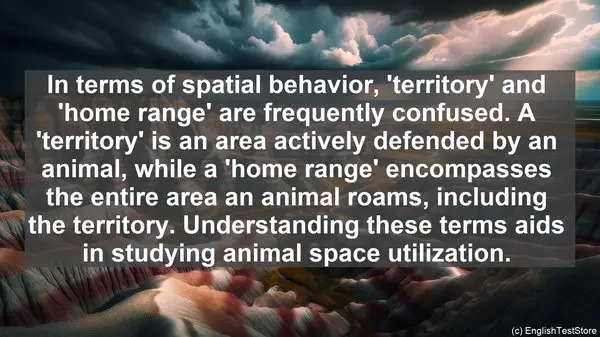Introduction: The Importance of Clear Communication in Ethology
As budding ethologists, it’s crucial for us to communicate our findings accurately. However, certain words in ethology often lead to confusion. In this lesson, we’ll explore the top 10 commonly confused words in ethology and clarify their meanings. Let’s dive in!

1. Innate vs. Learned
The first pair of words that often perplexes ethologists is ‘innate’ and ‘learned.’ ‘Innate’ refers to behaviors that are instinctual, present from birth, while ‘learned’ behaviors are acquired through experience or observation. Understanding this distinction is vital in deciphering animal behavior.
2. Altruism vs. Selfishness
Next, we have ‘altruism’ and ‘selfishness.’ While ‘altruism’ denotes selfless behavior, ‘selfishness’ implies actions driven by personal gain. These terms are essential in studying social interactions and cooperation within animal groups.
3. Migration vs. Dispersal
Moving on, ‘migration’ and ‘dispersal’ are often used interchangeably, but they have distinct meanings. ‘Migration’ is the regular, often seasonal, movement of animals from one region to another, while ‘dispersal’ refers to the one-time movement of individuals away from their birthplace.
4. Territory vs. Home Range
In terms of spatial behavior, ‘territory’ and ‘home range’ are frequently confused. A ‘territory’ is an area actively defended by an animal, while a ‘home range’ encompasses the entire area an animal roams, including the territory. Understanding these terms aids in studying animal space utilization.
5. Ectotherm vs. Endotherm
Next, let’s clarify the difference between ‘ectotherm’ and ‘endotherm.’ An ‘ectotherm’ relies on external sources, such as the sun, to regulate its body temperature, while an ‘endotherm’ generates heat internally. This contrast is essential in understanding how animals cope with varying environments.
6. Hibernation vs. Torpor
When it comes to periods of reduced activity, ‘hibernation’ and ‘torpor’ are often used interchangeably. However, ‘hibernation’ is a long-term state of inactivity, while ‘torpor’ refers to a shorter, temporary period. These terms are crucial in studying animal energy conservation strategies.

7. Camouflage vs. Mimicry
In the realm of adaptations, ‘camouflage’ and ‘mimicry’ are frequently confused. ‘Camouflage’ involves blending in with the surroundings, while ‘mimicry’ is when one species imitates another, often for protection. Understanding these terms aids in unraveling the complexities of animal survival strategies.
8. Prey vs. Predator
When discussing feeding relationships, ‘prey’ and ‘predator’ are fundamental terms. ‘Prey’ refers to the hunted, while ‘predator’ denotes the hunter. These terms are crucial in understanding the dynamics of food chains and ecological balance.
9. Ethology vs. Ecology
While ‘ethology’ and ‘ecology’ are related fields, they have distinct focuses. ‘Ethology’ is the study of animal behavior, while ‘ecology’ encompasses the broader study of organisms and their interactions with the environment. Understanding this distinction is essential in choosing the right research direction.
10. Stimulus vs. Response
Lastly, we have ‘stimulus’ and ‘response.’ A ‘stimulus’ is any external factor that elicits a reaction, while a ‘response’ is the organism’s reaction to that stimulus. These terms are fundamental in understanding the cause-and-effect relationships in animal behavior.
